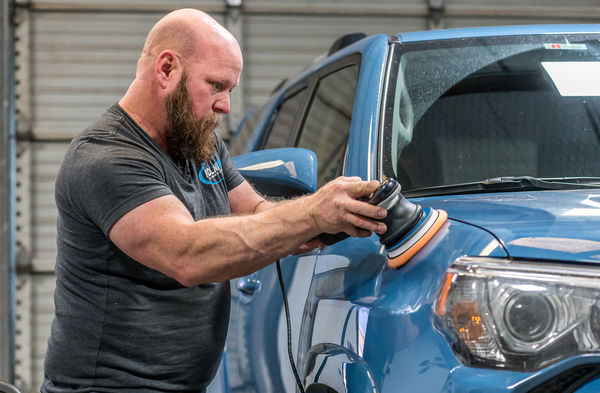Actual working ISO
Dec 10, 2018 09:11:04 #
Gene51 wrote:
I think Sharpshooter's image blows your analogy completely to pieces.
I'll 2nd that!
Dec 10, 2018 11:56:13 #
Gene51 wrote:
I think Sharpshooter's image blows your analogy completely to pieces.
It sure do...
Dec 10, 2018 12:10:41 #
JohnSwanda wrote:
it's all meaningless unless you specify which camera you are talking about. I doubt any current camera will cut the quality of the lens by half going from ISO 100 to 200. And if you are in a dark gym shooting a basketball game, waiting around for better light won't work, and supplemental light may not be allowed.
Yeah, I kinda figured that table was a crock of hooie also. It's totally camera dependent. My most expensive DSLR probably has the worst noise at higher ISO'S but it has a 50 megapixel sensor. On the other hand, images from my newer 5Div looks almost as good at ISO 6400 as they do at ISO 400. Yeah, it really depends on the individual camera.
Dec 10, 2018 15:36:32 #
rmorrison1116 wrote:
Yeah, I kinda figured that table was a crock of hooie also. It's totally camera dependent. My most expensive DSLR probably has the worst noise at higher ISO'S but it has a 50 megapixel sensor. On the other hand, images from my newer 5Div looks almost as good at ISO 6400 as they do at ISO 400. Yeah, it really depends on the individual camera.
Yeah, and if you downsample those images to 12 mp, the noise "magically" disappears (actually the interpolation will "average" the noise across pixels).
Dec 11, 2018 00:44:11 #
Pablo8 wrote:
The Nikon and Sony high ISO's work for me. Sure, some models of Nikon and Sony go higher, but I'm happy with what I have got. FF and Crop.
So it basically goes as "it depends".
A picture is better than nothing, one camera may be better than the other and so forth.
But aren't we missing a point here? ISO is a standard. Hence if a camera says it can reach such level of the standard, that camera should be good at its designated ISO.
As an example; if "XY" camera is rated 100-5000 ISO, we should safely assume that at the highest ISO rated, we still could get a relatively good image but that is not necessarily true.
Hence the question of, what is the actual working ISO, as it seems to me, these ratings they use are just selling point candy and are useless comparison in actual photography.
Like cars are rated speeds. On a speed camera, 100kph is 100kph whatever car you use. But if cars were cameras, they are rated 100kph but only happens if pushed down a hill.
Dec 11, 2018 04:11:11 #
Wallen wrote:
So it basically goes as "it depends". br... (show quote)
It boils down to marketing hype and caveat emptor. The D500 is stated to go to ISO 1million something - and it does. But that is at least 4 stops higher than its actual useful (in most RW situations) ISO and the 50K ISO, while useful in some situations would not be deemed useful for all photographic genera.
Like cars, when pushed to the limits, things don’t always work the way the user thinks they will (unless the user has tested out the equipment). Try taking an old muscle car with 4 wheel drum brakes out and running it at full speed. Not only is it likely to be a handful in anything but a straight line, if you have to nail the brakes, they will fade to useless well above 0 mph, generally, above posted highway speeds. Just cause it goes doesn’t mean it will stop. Probably not what the driver thought would happen. Same as a camera, but nobody dies when your pics are noisier than you would like.
Dec 11, 2018 06:41:00 #
Wallen wrote:
Cameras are matched against each other and praised... (show quote)
As always it depends. Images of birds in a tree close by I wound not bother going above 800, images of my grandson on stage in a play, whatever it takes to get the shots.
Dec 11, 2018 07:02:14 #
Wallen wrote:
Cameras are matched against each other and praised... (show quote)
I'm old school. I get uncomfortable shooting above ISO 400. Silly, I know. The way I see it, using very high ISO can mean the difference between a good picture or nothing at all. I prefer ISO 100, but if I have to go over 5,000, I'll do it.
Dec 11, 2018 07:09:21 #
I did some testing with my a7III and can easily go to 6000 and not see appreciable noise. I did this because somebody posted an image with noise, and thought there was none. I have had other cameras that had lots of noise at that ISO. So, your analogy of the quality of lens to noise does not seem to work in my case.
Bipod wrote:
The price of high ISO is noise. br br Random nois... (show quote)
Dec 11, 2018 07:13:54 #
Although I make no claims to being a low light photographer I try to shoot whenever possible at ISO 1600 as a limit. Beyond that I think of a noise reduction software.
Dec 11, 2018 07:52:25 #
Dec 11, 2018 08:07:30 #
I think we all know from previous discussions that ISO performance varies considerably from camera to camera. I have to wonder if a sensitivity of 800 ISO on one camera is even the same level of sensitivity on another camera set to 800 ISO? If this varies considerably, they can call it anything they want, we are not comparing apples to apples. So, is noise really the only variable factor between two cameras set at the same ISO number? In other words are the ISO settings equal from camera to camera where we should get very similar exposure performance at the same ISO level or does this also vary from camera to camera to compound the problem of making direct comparisons?
Dec 11, 2018 08:07:54 #
Wallen wrote:
So it basically goes as "it depends". br... (show quote)
Now I think you are asking for a concrete measure of capacity and quality. In a changeable world, this is not always possible to define.
In reality, the ISO ratings of a camera only say what is available, not how that particular camera will handle it. This is a developing technology, which explains the differences in results between different levels of models and between newer and older versions.
Using your example of a car, the ability to reach a certain speed may be definable and constant, but how that car handles at that speed will vary depending on the same kinds of factors as we see in cameras. Type of build, quality of build and materials, technological level of development, etc.
And don't forget the effects contributed by whatever lens you use on the camera [like what tires you use on the car!]...
Dec 11, 2018 08:22:10 #
My 7D MKII stinks at high ISO. Going to shoot a hockey game this morning in a rink with very poor lighting and a very dark colored wood ceiling. I'll post some photos with the ISO f/stop and speed info. I'll also post before and after processing in LR. Looking for a good program to remove noise, checked out a few already. Could use it for shooting night football games too.
Dec 11, 2018 08:47:22 #
DavidPine
Loc: Fredericksburg, TX
The newer sensors are knocking you out of your assumptions. Nikon's D5 is great with high ISO and the image that follows I made with a Nikon Z6, Nikon 105G, 1/800sec, f/5 at 10,000 ISO. This was a random image while I was getting scratch marks buffed away on my car.
Bipod wrote:
The price of high ISO is noise. br br Random nois... (show quote)
If you want to reply, then register here. Registration is free and your account is created instantly, so you can post right away.












